Citrus tree care and growing guide – expert tips for lemons, limes, oranges and grapefruits
From planting tips to how to deal with common problems, our expert guide has got your citrus tree queries covered

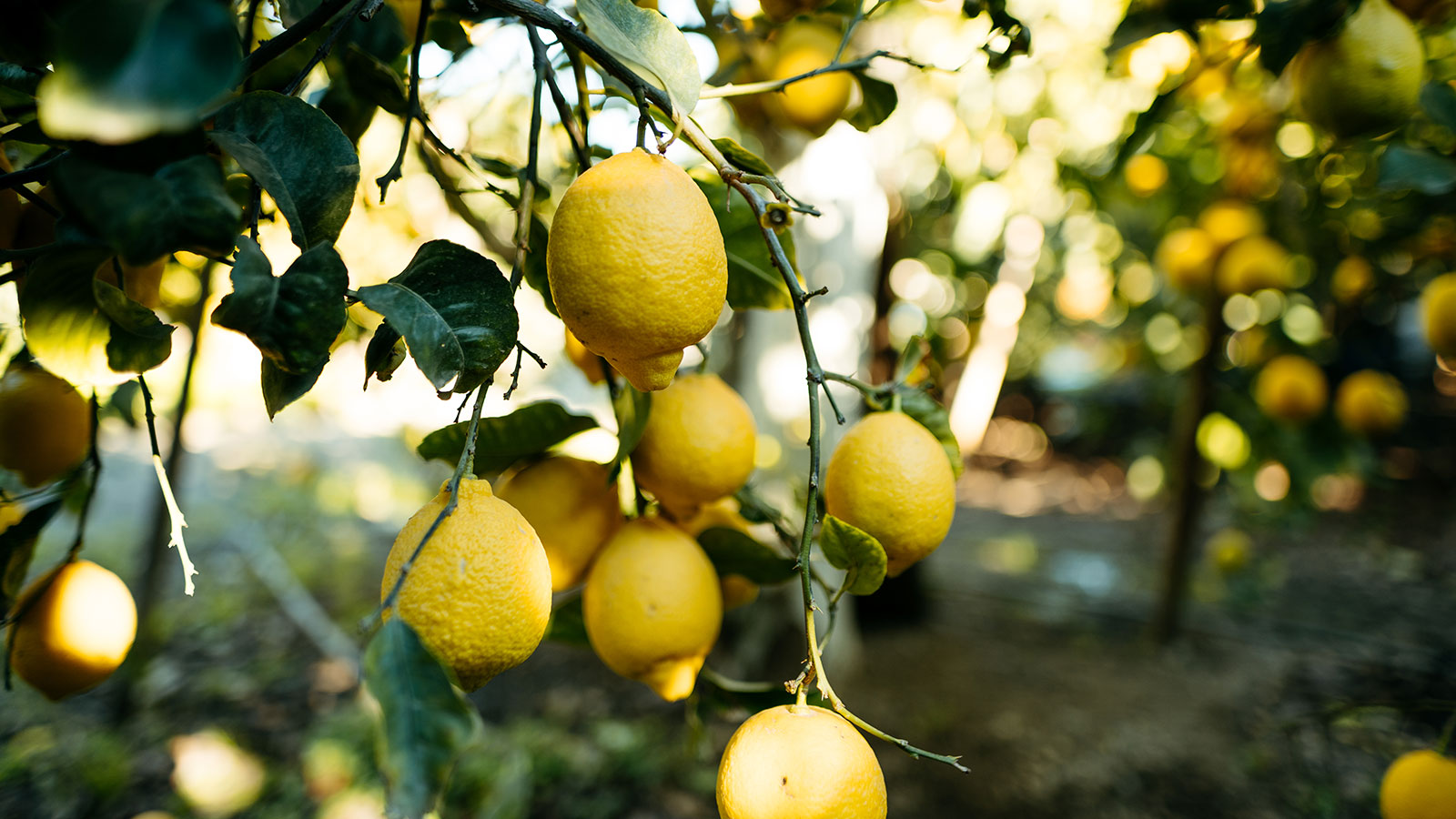
Citrus trees are small to medium-sized, frost tender, sub-tropical trees whose fragrant spring and summer flowers are followed by a range of different tangy fruits including oranges, lemons, limes and grapefruit. Naturally developing a well-branched crown of angled growth, the shoots of many carry sharp spines to surprise the unwary at harvest time. The oval leaves of these trees are mid to dark green in color, and strongly aromatic when crushed.
Citrus trees are pollinated by bees, and are self-fertile, so do not need a different variety nearby to ensure a good crop. Fruits mature six to eight months after flowering and remain in good condition, on the tree, for several weeks. A mature citrus fruit tree, growing outside, should produce about a hundred fruits per season – so we rarely need more than one tree of each type.
Citrus trees can also be grown in planters, an especially wise approach in colder areas as they can be moved into a protected site for winter. Hardiness varies according to the variety and, for some trees, the rootstock on which the fruiting variety is grafted. Citrus are grown in greenhouses or conservatories, or in the home, in zone 8 and below.
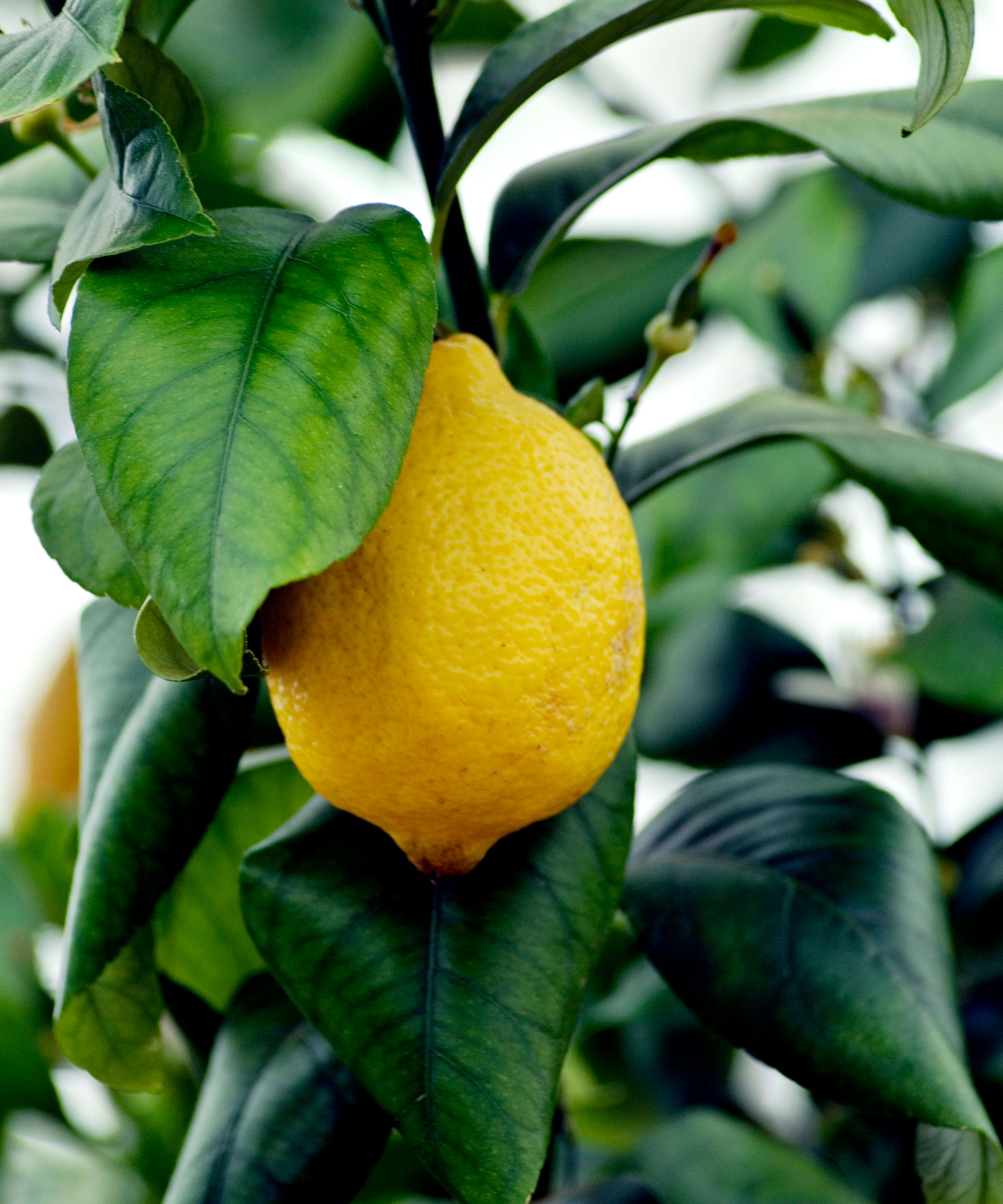
In warmer zones, you can can plant citrus trees outdoors in the ground
Citrus tree: key facts
- Plant type: Flowering and fruiting evergreen shrub or small tree
- Mature size: Up to 20ft, sometimes larger
- Soil type: Rich, fertile but well-drained, or in pots
- Soil pH: Neutral to acid
- Time of year to plant: Spring
- Flowering time: Spring, summer
- Fruiting time: Summer, fall, winter
- Flower color: White, sweetly scented
- Hardiness zone: USDA Z9
- Scientific name: Citrus
- Common name: Grapefruit, lemon, lime, orange etc
Types of citrus trees and shrubs
'Gardeners and cooks in all regions of the country can grow citrus trees,' says the experts at Connecticut’s White Flower Farm. 'Gardeners in Zone 10 can expect them to reach 6-10ft tall when planted in the ground. Elsewhere in the country, citrus should be grown in containers and will stay smaller, eventually reaching 4-5ft. In cold climates, containers may be moved outside during summer to a sunny spot protected from the wind, then brought back indoors before frost.'
- Grapefruits (Varieties of Citrus x paradisi). Large-fruited hybrids, with fruits up to 6in across, originating in Barbados. They have yellow skins and either red, pink or white flesh.
- Kumquat (Varieties of Fortunella species). Scientifically speaking, the kumquat is not a citrus but is closely related. Kumquat trees are more adaptable and cold and heat tolerant than most citrus.
- Lemons (Hybrids of Citrus limon). Pale yellow fruits, 2.5-4in long, with a nipple-like lump at the tip, have a highly aromatic skin, with yellow and very acidic juice.
- Limes (Hybrids of Citrus aurantiifolia and other species). The fruits are 1.5-2.5in across, rich green at first then ripening to pale yellow and packed with highly acidic juice.
- Mandarin oranges (Citrus reticulata). Tangerines, mandarins, satsumas and clementines are included here, all have orange fruits to 4in across, with skin that peels easily.
- Sour oranges (Citrus aurantium). Hardier than other oranges, and making smaller trees, the rough fruits are up to 3in across and are also known as bitter oranges and, in Europe, as Seville oranges. This is the type used for orange marmalade.
- Sweet oranges (Hybrids of Citrus reticulata). The rounded fruits are up to 4in across, and have a thick orange skin surrounding the familiar sweet flavorsome juice. Includes ‘Valencia’ oranges, blood oranges, tangelos and the especially sweet navel oranges which are considered best for home growing.
- Shop citrus plants at Amazon
- Shop citrus plants at Fast Growing Trees
- Shop citrus plants at Nature Hills
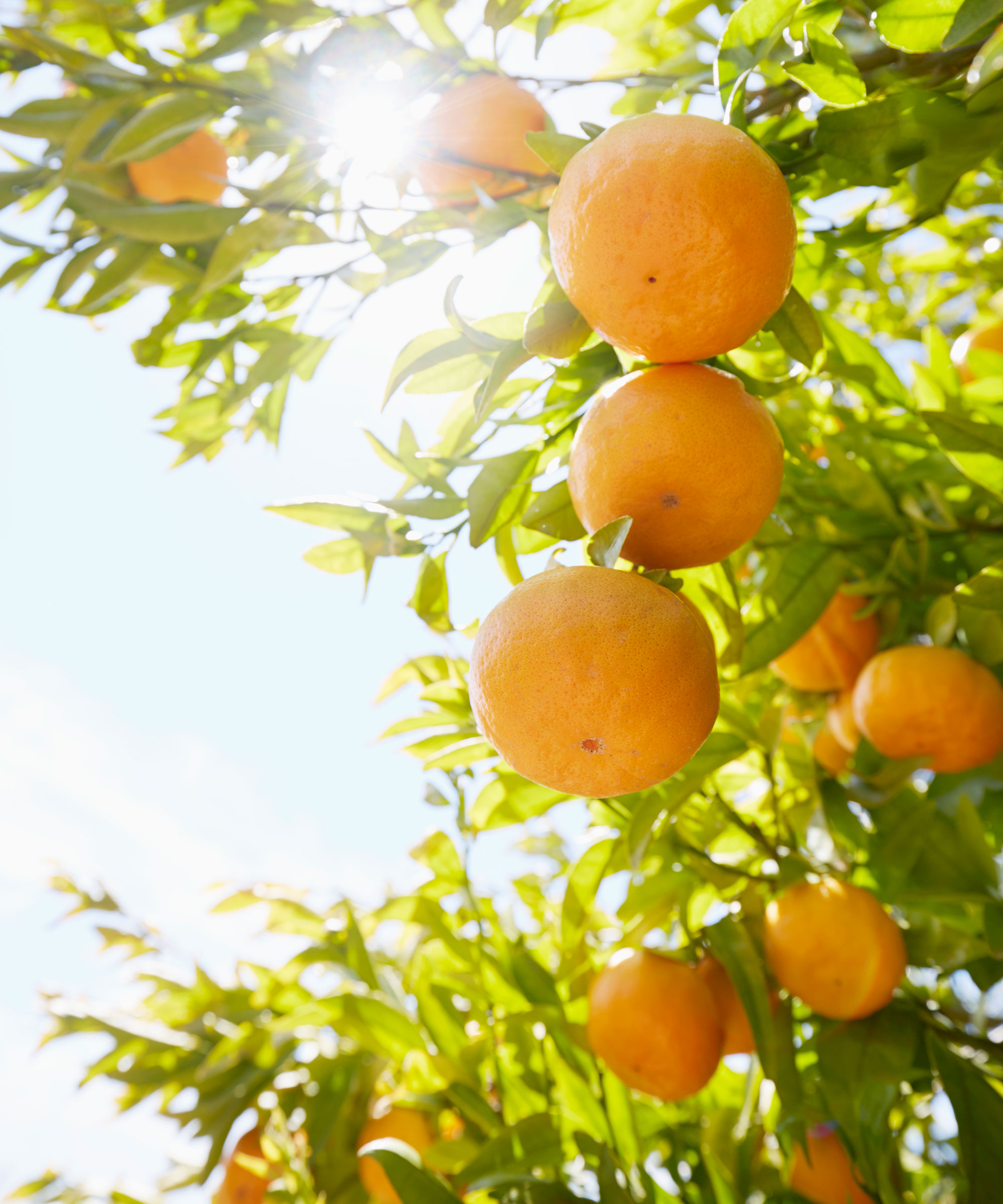
Mandarin oranges are a popular crop to grow in sunny spots
How to choose the right citrus tree for your yard
In one sense, choosing citrus is easy. It’s as simple as: do you want to grow an orange or a lemon or a lime? Then other factors come into play in the choice of variety including the eventual size of tree, fruit qualities, number and size of thorns, and other features.
At the same time, climate – and especially your hardiness zone – is crucial. It is a good rule that citrus are hardy to USDA Z9, in Z8 some citrus may be hardy and some may be severely damaged. Some varieties are more cold tolerant than others.
McKenzie Farms, in South Carolina, specialize in cold-hardy citrus varieties and list a wide and varied range for shipping across the country. Some varieties will take temperatures as low at 10˚F, but not for long periods or in wet soil.
Design expertise in your inbox – from inspiring decorating ideas and beautiful celebrity homes to practical gardening advice and shopping round-ups.
Your state co-operative extension service will give advice on the best citrus, and the best varieties, for your area.
Where to grow citrus
In general, citrus will grow in a range of different soil types but they will not thrive in wet, badly drained situations. Citrus crop most prolifically in slightly acid soil, with a pH of between 5.5 and 6.5.
Citrus remain healthy and crop well in full sun but, in the warmest zones, eight hours of full sun is usually enough to keep citrus trees happy. In marginal areas plant citrus in sites sheltered from cold winds. Individual varieties may have special needs.
In zones 5-8, citrus make fine plants for a sun room or enclosed porch. When growing citrus inside in containers, they can be moved outside for the summer, and returned to protection in fall. Even gardeners in zones as cold as Z4 can grow citrus outside for the summer, but they must be moved to a bright, but frost-free, place for winter.
Citrus appreciate good air circulation so do not plant against walls or solid fences, or in corners.
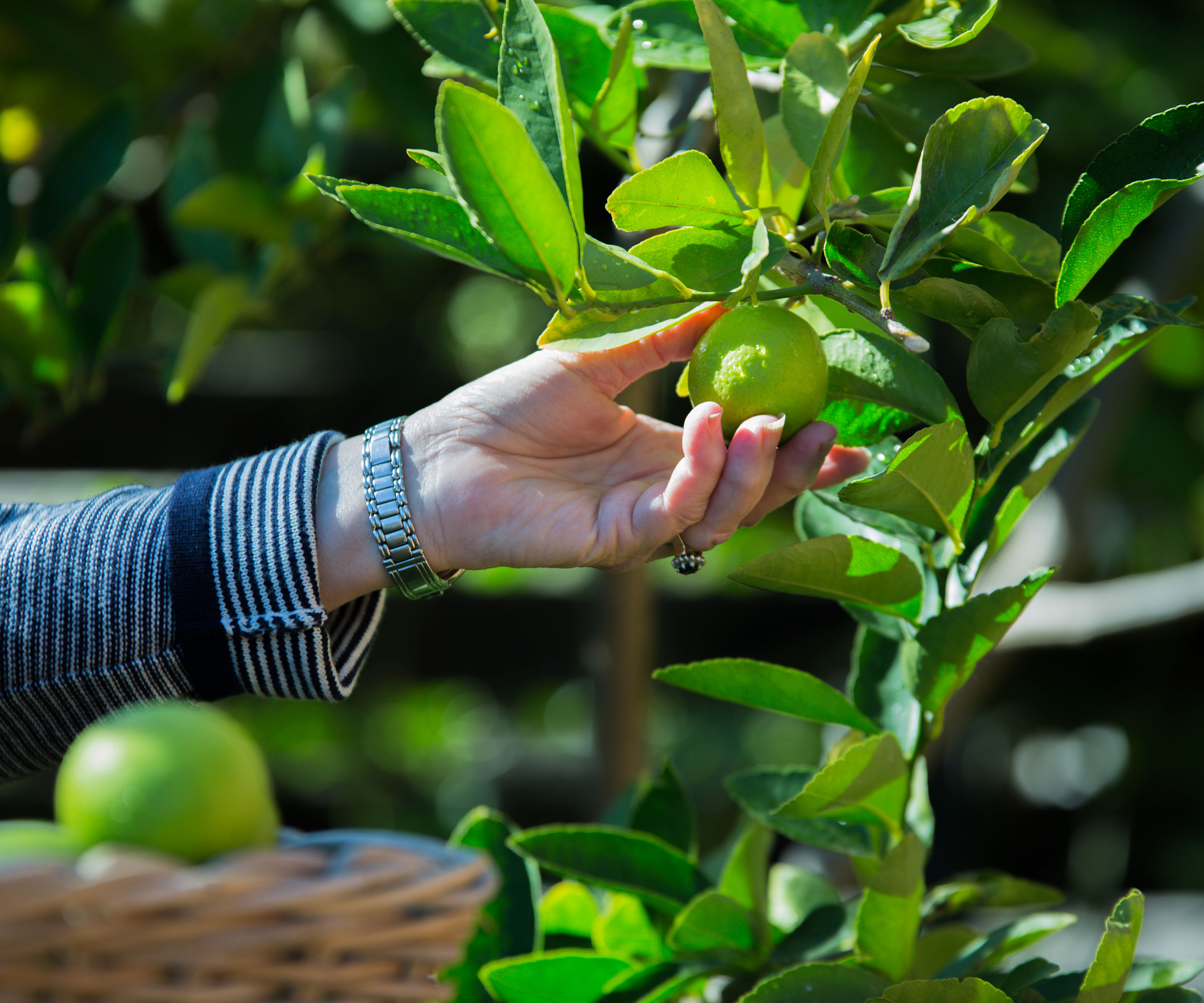
For best results, make sure your citrus trees are planted in a spot where they will get lots of sunshine
Planting citrus
Citrus are best planted outside in early spring, after the last frost in your area. Amend poor soils with organic matter. Spacing depends on the eventual mature size of the variety you choose, although you will usually only need one variety of each type as many crop heavily.
Citrus can be long-lived so repay good preparation, amending poor soils with organic matter is always helpful. Take care not to damage the roots of your new citrus when planting.
Support trees with short stakes in windy areas and spread a weed-free type of mulch across the rooting area to get rid of weeds and prevent further weed growth, as well as to help retain moisture. In their first few years after planting, be careful not to allow the plants to dry out as this will slow their development into mature plants.
Citrus care tips
Citrus will often crop well without much attention, but regular fertilizing, pruning, mulching and watering in long dry spells will improve the yield.
Choose a plant food specially developed for citrus and research when to fertilize citrus trees to do so correctly. Granular feeds such as Citrus-tone (available from Amazon), are available for trees planted outside in the ground. Liquid fertilizers including Miracle-Gro Citrus Tree Fertilizer and EZ-gro Citrus Tree Fertilizer, are available for citrus grown in planters.
Some citrus crop better with regular pruning, others crop well when left to develop without intervention. Check the guidance for when to prune citrus trees that is provided by the nursery for the variety you choose.
Watering can help improve the crop in dry seasons and in dry areas, exceptionally dry roots are sometimes indicated by the sides of the leaves rolling inwards. To water your citrus trees correctly, it's important to know that allowing your citrus to dry out and then soaking deeply is less effective than keeping the roots consistently moist, applying water when the top two inches of soil has become dry. A drip irrigation system can be used for citrus in planters. If your lemon tree leaves are turning yellow, however, this can be an indication of overwatering, so make sure you get your watering levels correct.
Most citrus varieties are self-fertile – that is, a solitary tree will usually produce fruits without another citrus nearby. However, cropping is often heavier if another variety of the same type of citrus is planted within bee range.
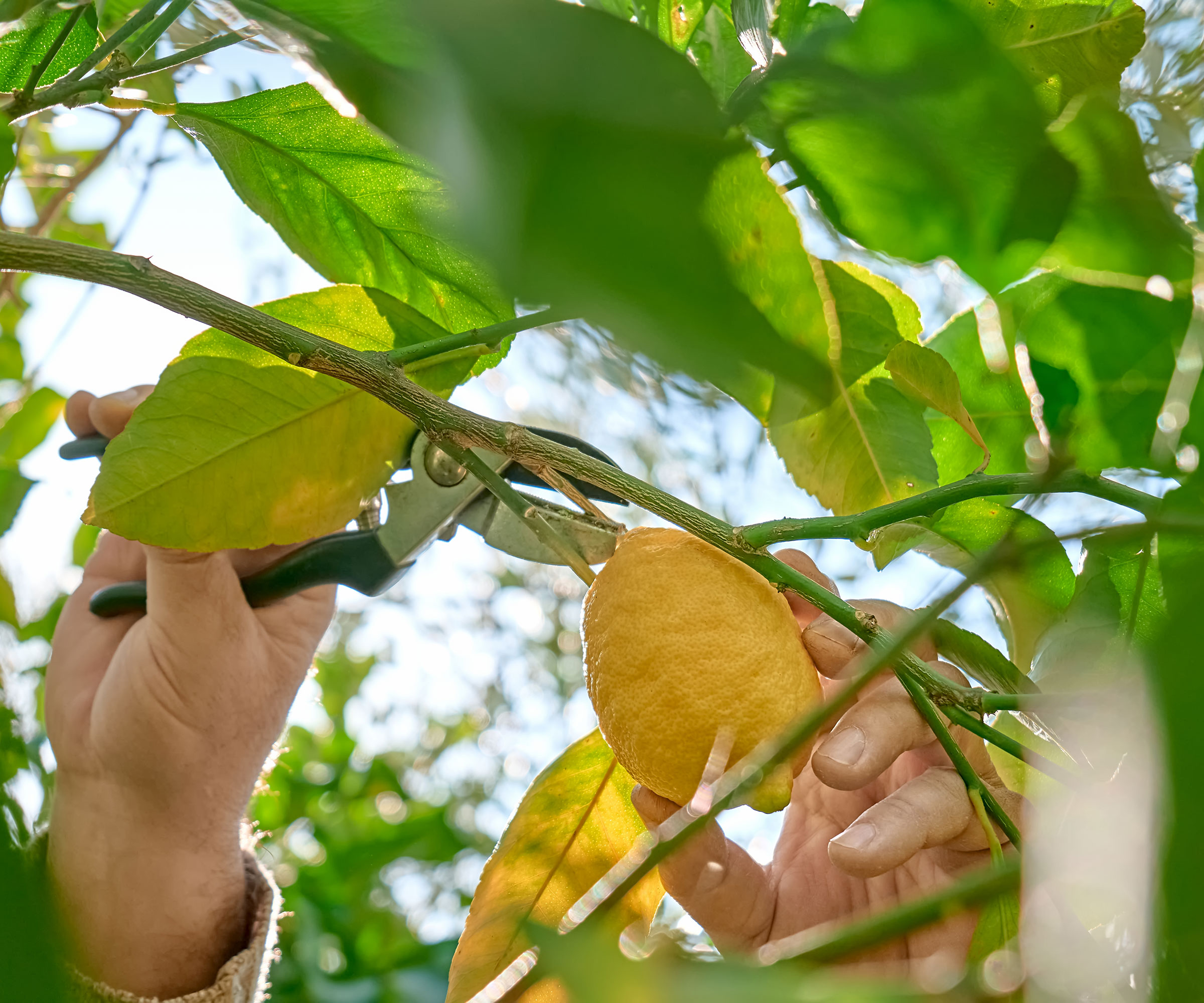
Pruning can help to improve the crop of certain citrus trees
Growing citrus indoors
Citrus are the best indoor fruit trees and can be good indoor plants, although many grow too large. All need plenty of light, most experts recommend a south-facing situation – on a shelf near a south-facing window or in a sunroom, under a skylight, or in a greenhouse. In the north, some people use grow lights to ensure that their citrus plants enjoy enough light.
They prefer a daytime temperature of about 65˚F, dropping to 55-60˚F at night. Your indoor citrus will appreciate being moved outside in summer. Keep their potting soil moist and feed during the spring and summer with a liquid citrus feed. Never leave excess water in their saucer as this will cause the roots to rot.
If you're looking for a top tree to grow in pots, ‘Meyer’ lemon (available from Fast Growing Trees) is the most reliable variety if you want to grow a lemon tree indoors, especially as it has relatively few thorns. It flowers and fruits year-round but, unfortunately, the skin is thin. California’s Roger’s Gardens tell us: 'The Meyer lemon tree produces fruit that is actually a cross between a lemon and a Mandarin orange. Because these lemons have the typical, more savory lemon flavor with a naturally sweet twist, they are a favorite of chefs and bakers all over the world.'
The calamondin orange (also from Fast Growing Trees) grows well in the house too. The fruits take many months to mature after flowering – so do not be tempted to pick and sample them too early.

Meyer lemon trees are a good option for growing indoors in pots
How to make more citrus plants
There are three ways to make more citrus plants. New plants can be grown from seeds. However, although growing a lemon from seed can be fun for kids with patience, citrus started from seeds can take many years to produce their first fruits. Also, the size of the fruits, their juiciness, skin color and the eventual size of the mature plant can also be a surprise – and not always in a good way.
Citrus can also be started by taking plant cuttings, although the first thing to say about growing from cuttings is that, in some US states, this approach is actually illegal. The ban is part of the program of measures put in place by some states to protect commercial citrus crops from disease. Always check with your local extension service for an explanation of any local restrictions.
Many citrus varieties are propagated by grafting. This is where a shoot of a named variety with outstanding fruiting qualities is joined to roots (the rootstock) with special rooting qualities, such as the ability to grow in the widest variety of soil conditions, to speed up first cropping etc. However, this approach is only suitable for experienced propagators.
Growing citrus from cuttings
If growing citrus from cuttings in your area is allowed, follow this method.
- Start in early or mid-summer by snipping off shoot tips with from three to five leaves. Cut off the lower leaves, leaving two at the tip of the cutting, and trim the base just below a leaf joint.
- Dip the base of each cutting in rooting hormone (available at Amazon) and push each individually into plant cells, or four to a 4in pot, loosely filled with moist seed starting mix.
- Irrigate, then cover with a clear plastic lid. Chances of successful rooting are much improved if the cuttings are misted three or four times a day.
- Stand the pots or cell trays in a bright place indoors (or outdoors in the warmest areas ) – but not in direct sun.
- Roots should develop in three to six weeks. Young white or creamy roots will emerge from the base, and there will be signs of growth at the tips of the cuttings.
- Move the cuttings into individual pots of planting mix, grow on in a warm and light place then, when roots again start to emerge from the drainage holes in the base of the pot, it’s time to plant out your new citrus plants.
Citrus problems and how to solve them
Citrus plants may suffer from a wide variety of pests and disease problems and few are restricted to any one type. The good news is that many can be prevented or cured by looking after your citrus more carefully.
Making sure that the roots of your citrus bushes and trees do not dry out is important. Plants growing in very well-drained soil may suffer from drought and specimens in planters and container gardens can easily dry out quickly, especially when they have remained for three or four years in the same pot without transplanting to a larger one.
Good nutrition is also important. Fertilizers have been developed for both citrus in planters, when they are dissolved in water and watered on, and for trees planted in your yard or garden, when a granular feed is spread across the rooting area. The pack will give good guidance on how much to apply, and when.
A number of pest problems can be managed by spraying with a weak spray solution made by adding one tablespoon of liquid dish washing detergent to one gallon of water, stirring well and spraying on both sides of the leaves using a mister or garden sprayer.
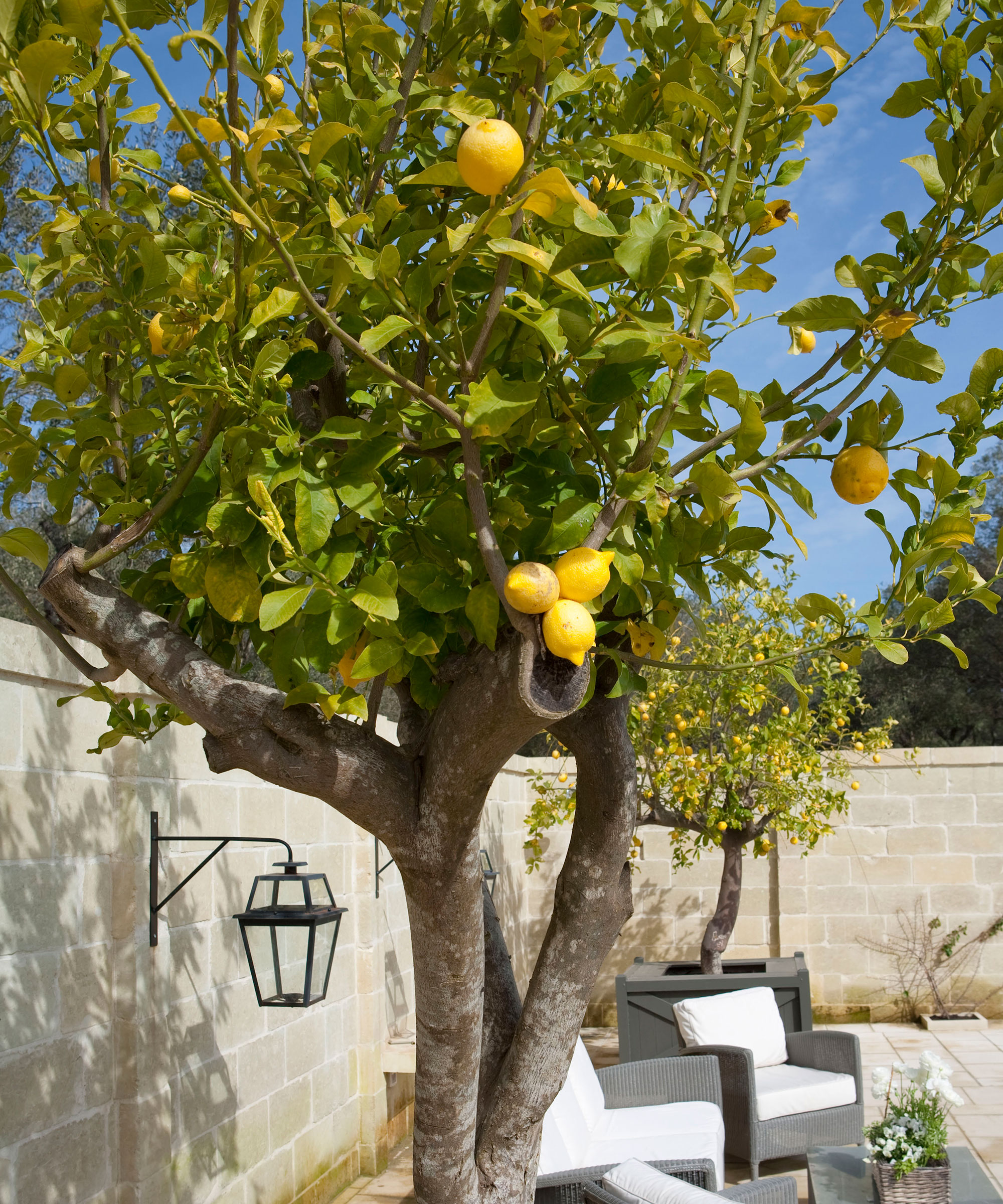
Citrus trees growing in containers will need watering regularly
How to buy citrus plants
Citrus, usually lemon or lime trees, are sometimes offered by walk-in nurseries and the garden departments of DIY stores, but the range will vary from none in colder parts of the country to a small selection appropriate to areas where they can be grown outside.
If you are serious about growing citrus, mail order suppliers offer a far better opportunity to find exactly what you are looking for. Their experts will also offer growing guidance for your area.
Expect plants to be shipped in regular gallon containers or, increasingly, in 'citrapots' which are tall narrow pots that save weight and cost when shipping but which still accommodate a deep root system. More mature plants in larger, three gallon, containers may also be available.
Citrus are sometimes offered as seed-grown plants but, although less expensive, cropping and their eventual size can be unpredictable. The best citrus are raised on the nursery by grafting on to specially chosen roots that shorten the wait for the first crop, grow in a wider variety of soils, or control the mature size of the tree.
As part of measures designed to prevent the spread of citrus diseases to commercial crops, mail order nurseries may be required not to ship to some states – Arizona, California, Florida and Texas in particular. There may also be restrictions on shipping to other states in the south and west, websites and catalogues will make this clear.
- Shop citrus plants at Amazon
- Shop citrus plants at Fast Growing Trees
- Shop citrus plants at Nature Hills
FAQs
Are citrus deer resistant?
Yes, citrus trees are considered to be deer-resistant plants up to a point. The young growth of many citrus varieties has sharp thorns which serve as a deterrent but deer will still eat citrus if they are sufficiently hungry. The flowers are strongly scented, and the foliage has a strong smell and this too deters the deer from browsing on your citrus plants.
However, if there are no more palatable plants in your yard, deer will certainly feed on your citrus bushes.
Can I grow oranges and lemons from the seeds in fruits from the grocery store?
Yes, but think first. It can take a citrus tree five years from starting the seeds to picking your first fruits, and even then the fruits may be poor in quality. So do you really want to spend years looking after a plant that may bring you little or no reward?
Also, not all supermarket lemons and limes and other citrus will contain seeds. So, simply retain any seeds that you come across when preparing bought fruits but discard any shriveled or damaged seeds. Put the chosen seeds in a cup of water – those that sink are the most likely to grow.
Next – I know it sounds mad! – but put the seeds in your mouth and suck them until they no longer taste of citrus. This removes juice that prevents sprouting. Fill a 4in diameter pot with moist seed starting mx, tap it on the table to settle it, space out four or five seeds across the surface and cover with 1/2in of compost.
Stand the pot in a clear plastic bag, tie the top, and stand it on a bright (but not sunny) windowsill or shelf in the sunroom. Green shoots should appear in three or four weeks. When your new plants are 2-3in tall, move each to its own individual pot.
Whether you want to grow your own crop of lemons, limes or oranges, a citrus tree can make a wonderful addition to your backyard.
Although they are a more obvious option for warmer climates, there is still the possibility to enjoy homegrown fruits in cooler climates, as the experts at Espoma Organic, specialists in citrus fertilizers, remind us: 'It is possible to grow dwarf citrus trees in pots in cold climates as long as you have a place to overwinter them in a cool, bright spot like a sun room. You’ll get the best fruit set if you grow your citrus outdoors in the summer and bring them inside before the first hard frost.'
So no matter where you live, picking delicious, juicy fruit from your own citrus tree can be a possibility.

Graham Rice is a garden writer who has won awards for his work online, and in books and magazines, on both sides of the Atlantic. He is a member of a number of Royal Horticultural Society committees and the recipient of the 2021 Garden Media Guild Lifetime Achievement Award. He gardened in Pennsylvania for 20 years, but has recently returned to his native England.